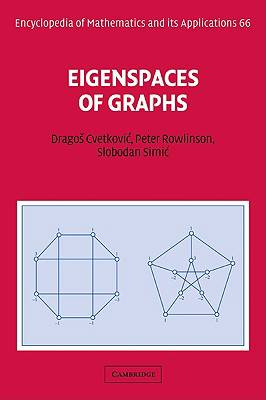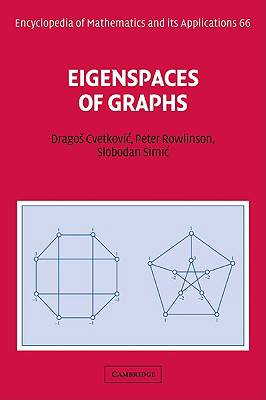
Je cadeautjes zeker op tijd in huis hebben voor de feestdagen? Kom langs in onze winkels en vind het perfecte geschenk!
- Afhalen na 1 uur in een winkel met voorraad
- Gratis thuislevering in België vanaf € 30
- Ruim aanbod met 7 miljoen producten
Je cadeautjes zeker op tijd in huis hebben voor de feestdagen? Kom langs in onze winkels en vind het perfecte geschenk!
- Afhalen na 1 uur in een winkel met voorraad
- Gratis thuislevering in België vanaf € 30
- Ruim aanbod met 7 miljoen producten
Zoeken
€ 103,95
+ 207 punten
Uitvoering
Omschrijving
Graph theory is an important branch of contemporary combinatorial mathematics. By describing recent results in algebraic graph theory and demonstrating how linear algebra can be used to tackle graph-theoretical problems, the authors provide new techniques for specialists in graph theory. The book explains how the spectral theory of finite graphs can be strengthened by exploiting properties of the eigenspaces of adjacency matrices associated with a graph. The extension of spectral techniques proceeds at three levels: using eigenvectors associated with an arbitrary labeling of graph vertices, using geometrical invariants of eigenspaces such as graph angles and main angles, and introducing certain kinds of canonical eigenvectors by means of star partitions and star bases. Current research on these topics is part of a wider effort to forge closer links between algebra and combinatorics. Problems of graph reconstruction and identification are used to illustrate the importance of graph angles and star partitions in relation to graph structure. Specialists in graph theory will welcome this treatment of important new research.
Specificaties
Betrokkenen
- Auteur(s):
- Uitgeverij:
Inhoud
- Aantal bladzijden:
- 276
- Taal:
- Engels
- Reeks:
- Reeksnummer:
- nr. 66
Eigenschappen
- Productcode (EAN):
- 9780521057189
- Verschijningsdatum:
- 1/03/2008
- Uitvoering:
- Paperback
- Formaat:
- Trade paperback (VS)
- Afmetingen:
- 156 mm x 234 mm
- Gewicht:
- 390 g

Alleen bij Standaard Boekhandel
+ 207 punten op je klantenkaart van Standaard Boekhandel
Beoordelingen
We publiceren alleen reviews die voldoen aan de voorwaarden voor reviews. Bekijk onze voorwaarden voor reviews.









